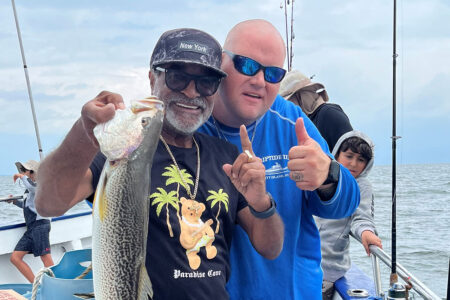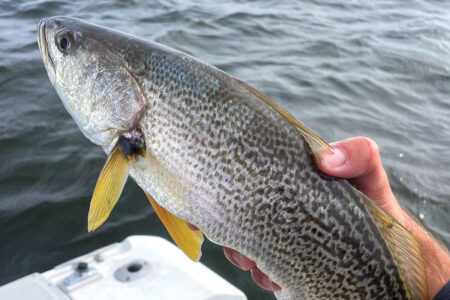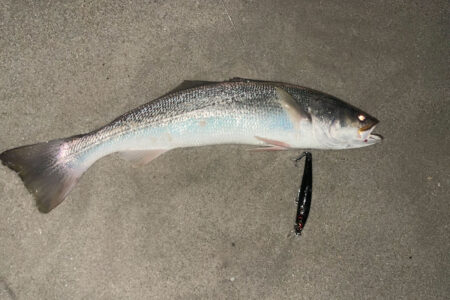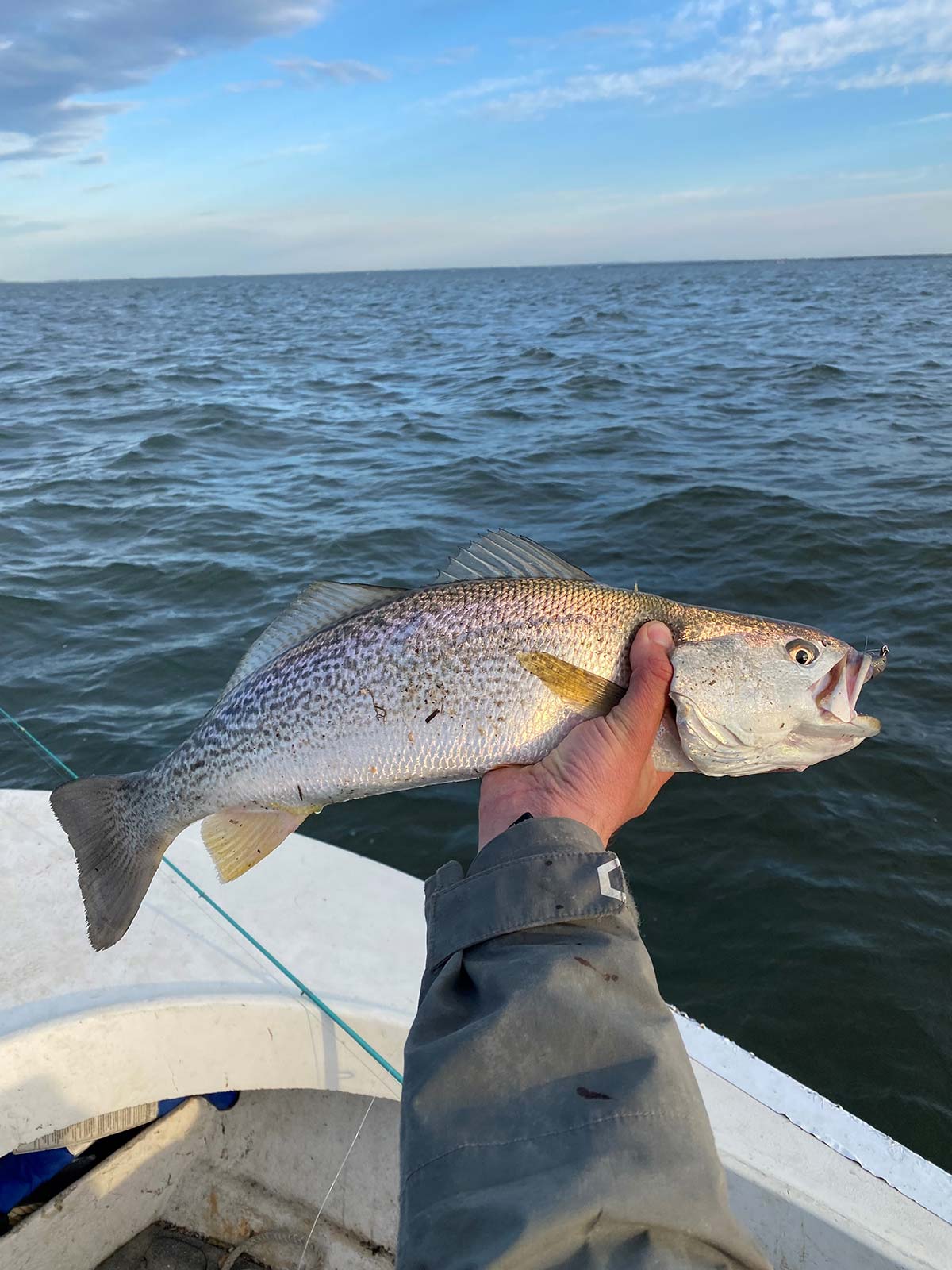
Look to the eastern portion of Moriches Bay for weakfish potential.
This article was locked in the vault since the weakfish disappeared from their usual spring and summer haunts in the Moriches Bay area in 2004. There were a couple here and there, but nothing like it was during the start of the 2000s. In fact, the late Fisherman Magazine senior editor Fred Golofaro told me to put a hold on the feature until the weakfish returned again. And Fred knew they would one day return. I’m glad they did return while he was still here to enjoy a couple of solid spring and summer seasons with the weakies in the Great South Bay.
Thank goodness the weakfish continue to return each spring and summer in solid numbers around Long Island, especially in Peconic Bay and along the eastern section of Moriches Bay and the Quogue Canal to the point that it’s time to blow the dust off the feature since the past several spring seasons has anglers smiling and rods bending hopefully for years to come. Best of all, they make a great alternative when fluke fishing may be slow, or shorts dominate the catch.
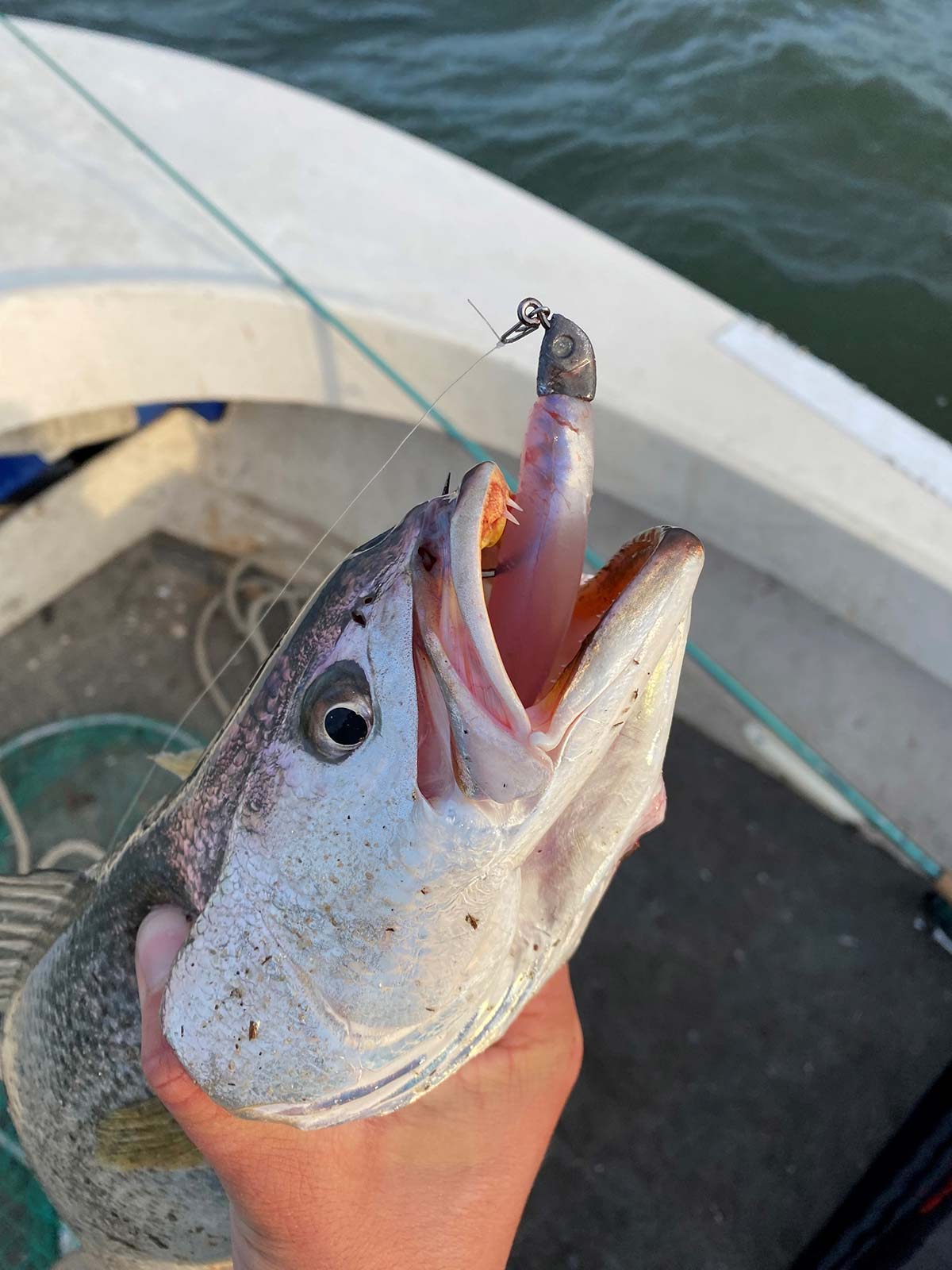
Weakfish Paradise Too
Always referred to as a flatfish paradise, Moriches Bay has never been recognized as a weakfish palace. This is because Moriches consists primarily of shallow water made up of mostly sandy/muddy flat bottom, except for both the East and West cut, which leads to and from the inlet area. There is only one main channel that runs along the bay. The channel starts from the Smiths Point Bridge to the west and ends at the Quantuck Canal to the east. Water depths vary along the channel, where some spots are as shallow as six feet, ranging up to 30 feet of water toward the bay’s eastern end. Water quality continues to be excellent in Moriches. In fact, during flood tide and under normal weather conditions, the water is clear, particularly from Buoy 15 to Buoy 28. Contributing factors to this gin-clear water are the last traces of the breach left by Super Storm Sandy west of the Smith Point Bridge. It can be so clear at times, that anglers can actually see their bait being attacked by various predators.
On the other hand, Super Storm Sandy did put a hurting at the East Cut inside Moriches Inlet with a breach inside the East Jetty, causing the East Cut to fill with sand. Although much of the sand has been dredged out of the cut and put back on the beach, plenty of shallow spots can leave you high and dry during low tide. Therefore proceed with caution. As we move deeper into the bay onto an easterly course, the water of the bay becomes less saline, which causes the water to be a little darker or brown. There is also a dramatic change in water temperature as brackish waters from Seatuck Creek and Speonk River spill out into this section of the Bay, providing healthy vegetation and plant life along the bottom and attracting a myriad of forage bait fish. This type of habitat shares similar characteristics as that of the Great South Bay, which provide the ideal spawning grounds for the weakfish as well as many other species.
An Early Start
| EARLY RISE GETS THE PRIZE |
| Weakfish are aggressive and will often feed both day and night. However, let me emphasize that early mornings or days when boat traffic is light, will often produce the best results. Just as any other species, boat traffic will put a damper on the action. Therefore, if you are restricted to fishing on the weekends, set that alarm clock an hour or two earlier and get out there before the midmorning rush hour traffic on the bay begins. Otherwise, try to get out during the week or on rainy days when traffic will be minimal. |
Back in the early 2000s, weakfish in the 2- to 10-pound range entered the east side of Moriches Bay, particularly inside the Quogue Canal, by late April or early May. These spawning fish usually abandon their spring haunts shortly after spawning or by June’s end. Briefly after the departure of the larger weakfish, their smaller siblings, known as summer weakfish, settle in for their warm water stay, situating in many back bays, creeks, and canals where they spend their mealtimes feeding on the tremendous amount of spearing that attract weakfish in such places. Summer weakfish will average from shorts to 4 pounds, with some up to 6 pounds. Smaller than their spring-run siblings, these feisty little battlers often provide hours of nonstop action under ideal conditions.
Honing In
The beauty of weakfish on the east end of the Bay is that the most productive area is tightly knit, being less than two miles long and well concentrated, yet the area has plenty of elbow room as most local anglers’ interests are focused with the fluke and bass action toward the west end of the bay. The location from Remsenberg to Speonk gets the most play during the summer and early fall; however, the north end of Seatuck Cove, particularly the 10-foot depth and along the flats, also produces good action. Early in the summer, the area known as “The Hole,” which is located between buoys 30 and 31 along the Remsenburg shoreline is where the action is. Here you will find water depths vary greatly from two to 30 feet. Toward the end of June into early July, as the spring run fish depart, more and more summer run weakfish filter into the area. These fish will concentrate and feed heavily in this area usually until late September or when changing weather patterns and dropping water temperatures send them on their way for warmer southern waters.
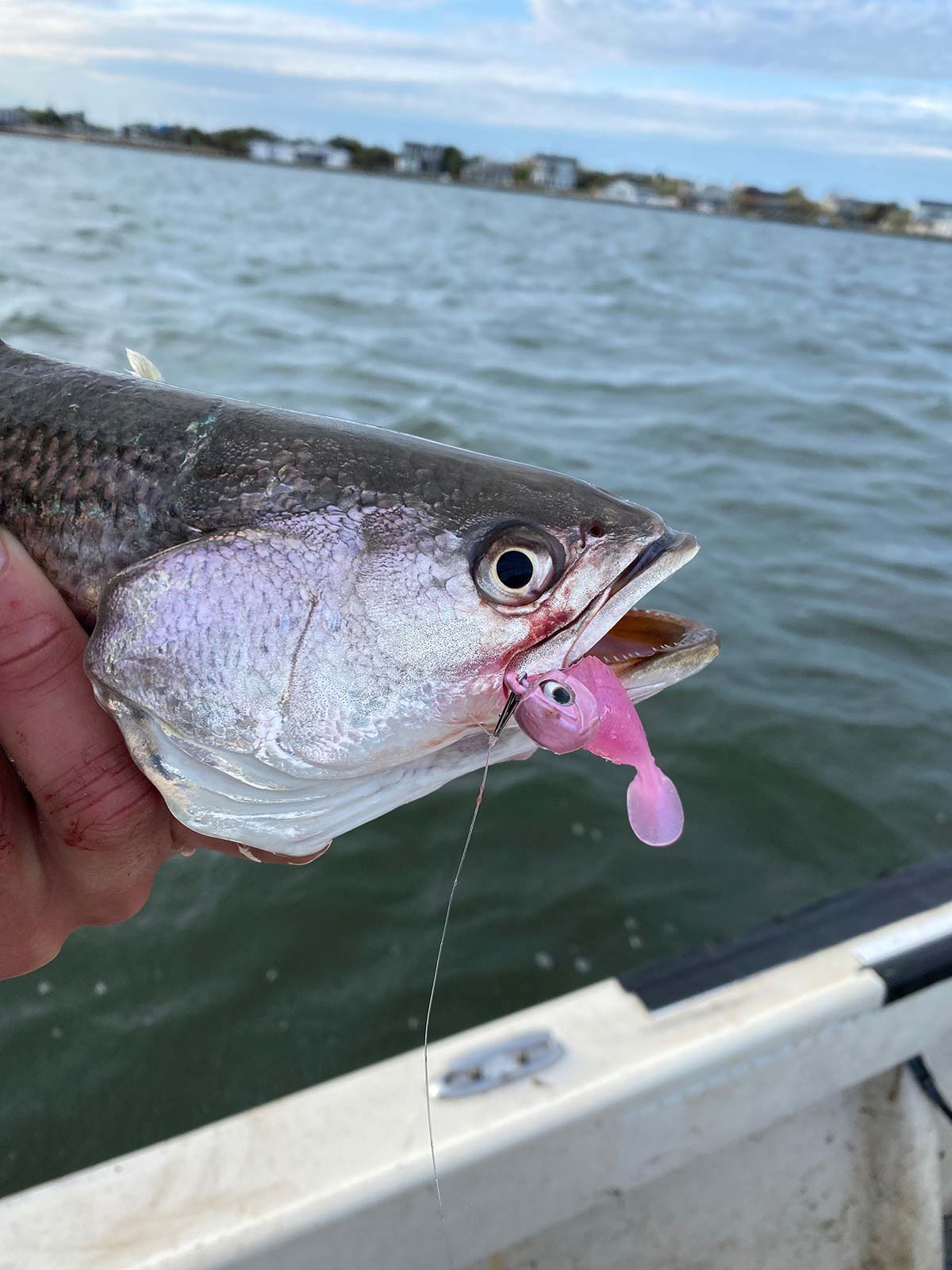
Cover And Mark Your Ground
Although some anglers prefer to anchor to the deeper holes and chum the weakfish to the boat, in most cases, it would be more productive to drift, particularly when the wind and current coincide together. This is beneficial and allows the angler to cover lots of ground. When drifting, concentrate your efforts along the edges of the channels and the drop-offs and up-rises around the deeper areas.
Much of the time, a good sounder will mark loads of life in the deeper pockets, but consistently the best action are on the drops and edges. After locating the fish, repeat the drift one more time before hitting the MOB button. This way, you can be assured the area is holding fish and not just a stray swimming by itself.
A Current Affair
As for the best tide, both sides of the tide will produce as long as there is a steady current. Truth be told, I would make plans to fish this area on the top of the tide as the first couple of hours of the ebb seems to have an edge on most days. My first concern would be a drift with the wind with the tide. An incoming tide and a west wind will give you a steady drift towards the east, while an east wind and an outgoing tide will drift you west. Perpendicular drifts with winds out of the north or south are fine as long you set your drifts with the current to go over the edges of the drop-offs.
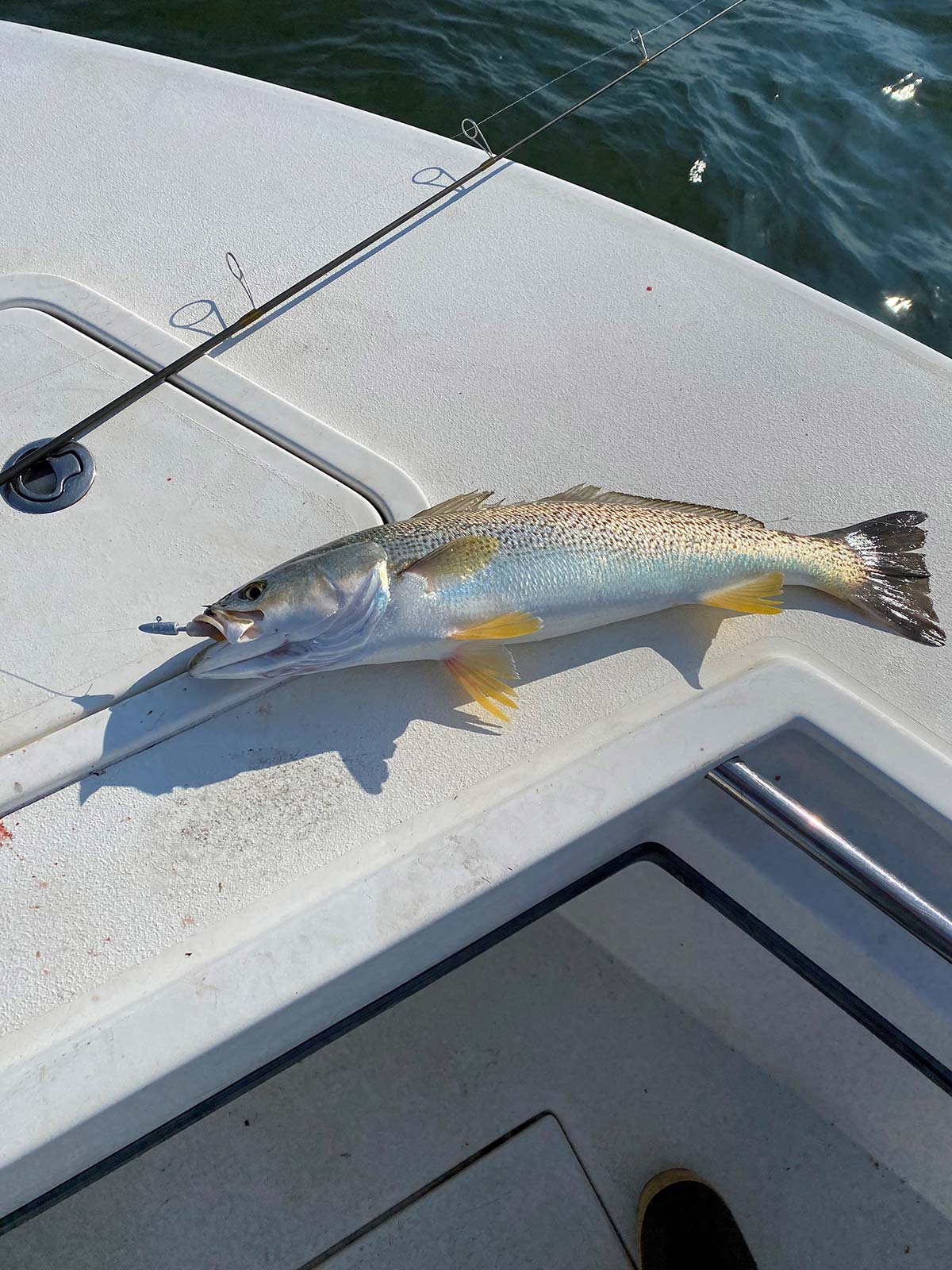
Extensive Menu
Weakfish feed on many different types of bait, including crustaceans, mollusks, and a large array of baitfish. With such a broad diet, weakfish are susceptible to a wide variety of artificial lures and baits. Bucktails, soft body plastics, and diamond jigs are a few of the more popular choices. These days when it comes to soft baits, it’s pretty hard not to be employing the 5 or 7-inch Bass Assassin in Albino red tail or Pearl White on a 3/4 to 1-ounce white or unpainted jig head bounced slowly along the bottom. Berkley Gulp baits, especially the 5-inch Jerk Shads and the 6-inch pink Swimming Mullet threaded onto a 1/2 or 3/4-ounce plain jig head and bounced along the bottom are effective also.
| NO BOAT, NO WORRIES |
| If you don’t own a boat, head on over to Silly Lilly Fishing Station, located at 99 Adelaide Ave, East Moriches, NY 11940, where boats and motors are for rent. They also have all your fishing needs plus a gift shop with all their Silly Lilly apparel. In addition, they have food trucks on the grounds in case you get hungry. Jay and the crew will be happy to point you to the latest hot spots as well as make your day as pleasant as possible. Give them a call at (631) 878-0247. |
Another extremely productive method is to employ the Spro Prime Bucktails, which are not like any other manufactured. The unique shape of the head and placement of the eyelet make these center-balanced jigs unique in the way they bounce along the bottom. Add in the bulging eyes, holographic finish, and blazing colors, and you have the perfect elements to keep the rods bending with weakfish. What really makes these jigs stand out from the rest is that they don’t fall or hang straight down, as is the case with most bucktails. Its gliding motion through the water acts as if it is swimming along. When jigged along the bottom, its body stays almost parallel, giving the jig a very natural appearance. All the Spro Prime Bucktails are made with durable, super-sharp Gamakatsu hooks. While the Prime Bucktails are available in 15 different colors, I suggest pink, glow, spearing blue, Chartreuse, Glow, and white, with 3/8 to 1-ounce being most effective on the east end of Moriches.
Newer to the market are the NLBN (No Live Bait Needed) soft plastics with their thread-style jig head. This durable paddle tail bait in smaller jig sizes, like 3/8 or ½ ounce, is another excellent finesse choice for the weaks.
Usually, the weakfish will hit these lures with a vengeance and often will hook themselves. Work these baits with either spinning or baitcaster outfits in the 10 to 12-pound class using a 6 to 10-foot fluorocarbon leader attached to the main line via an Albright Knot. If it’s hard baits you desire, either a 3-inch, 1/2-ounce, or a 4-inch, 1-ounce Rat-L-Traps in gold/blackback, chrome/blueback, or white/redhead will get the job done. If fishing with bait is more your style, whole sandworms on a hi-lo rig will work well, as will squid strips.
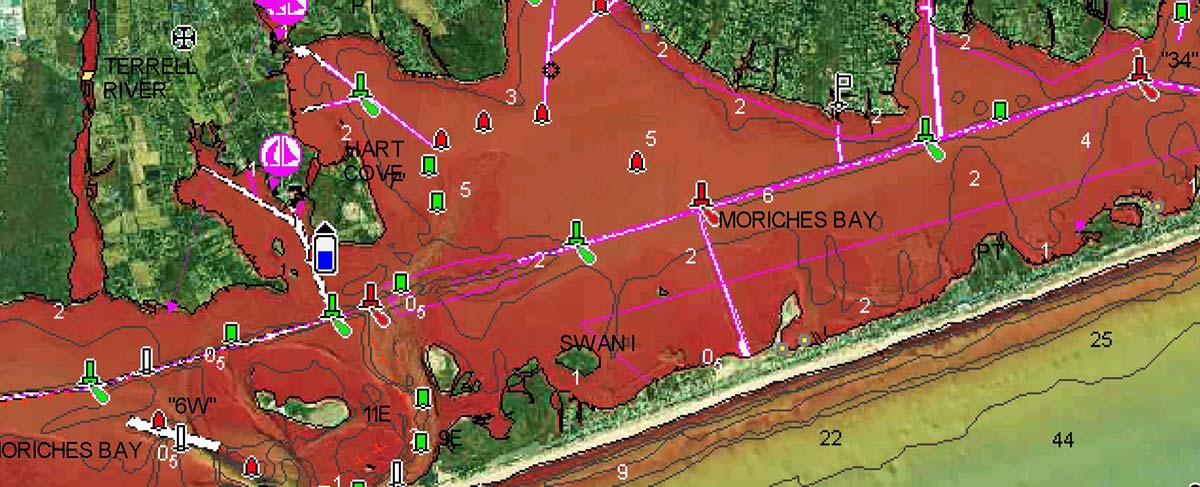
Some Hot Spots
Although Seatuck Cove and “The Hole” will have their share of weakies this summer, do not restrict fishing to just these areas. Venture off and explore new frontiers, such as the holes just east of the first bridge in Quogue Canal. Also, fish the deep hole directly west of the Golf Course just past the second bridge inside Quogue, as this is another great spot on the outgoing tide. Lastly, try working the drop-offs and depressions in the vicinity of Buoys 32 and 33. This whole area holds weakfish and is lightly fished. For a change of pace this summer, come to Moriches and enjoy a day of fine fishing.
As always, remember a good day of fishing doesn’t mean everything has to go in the cooler. In fact, current NY State regulations have one weakfish at 16 inches or better per person per day regulation. Please abide by the law and be part of the team of catch and release by gently returning those not being kept in hopes of good fishing for years to come.

